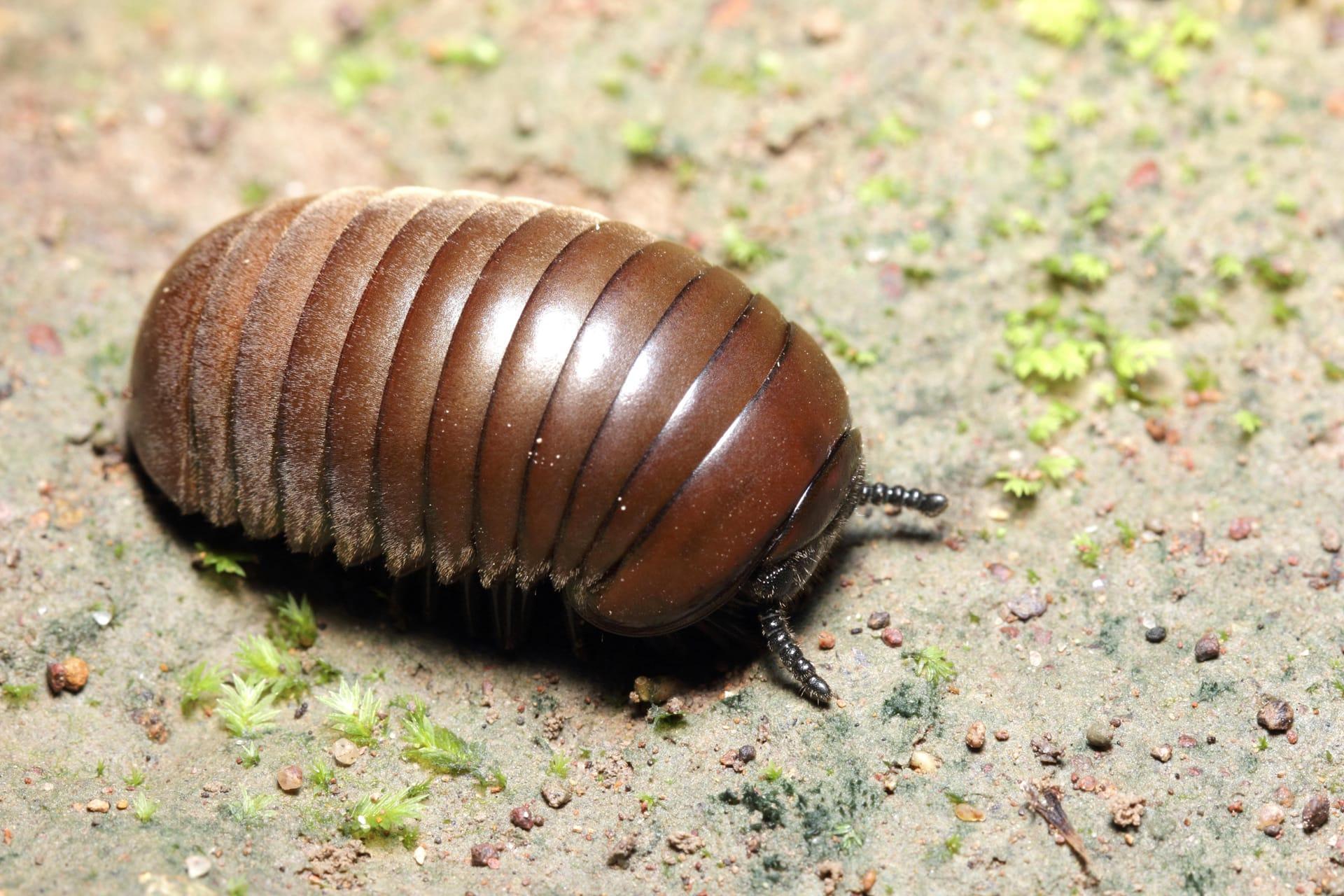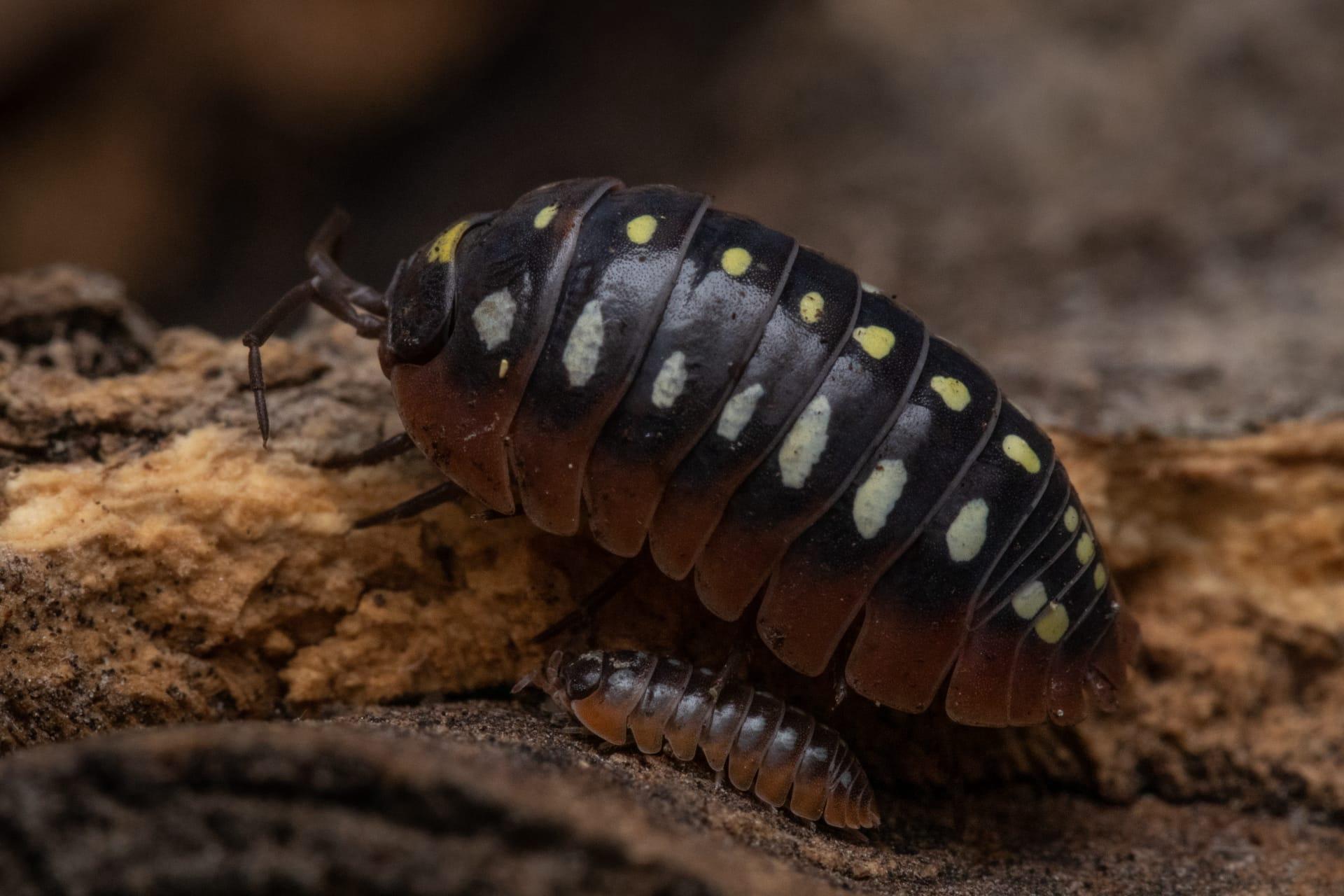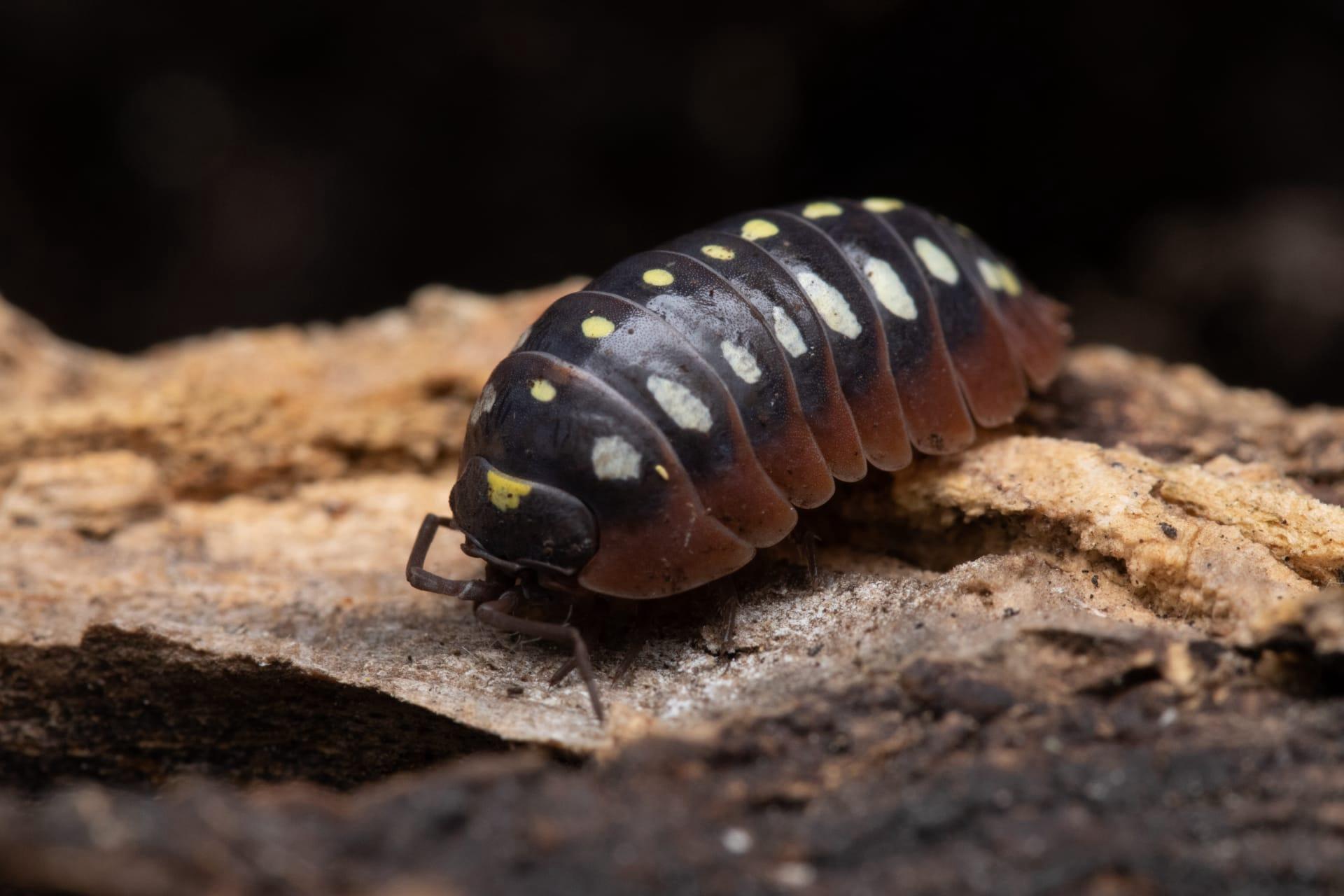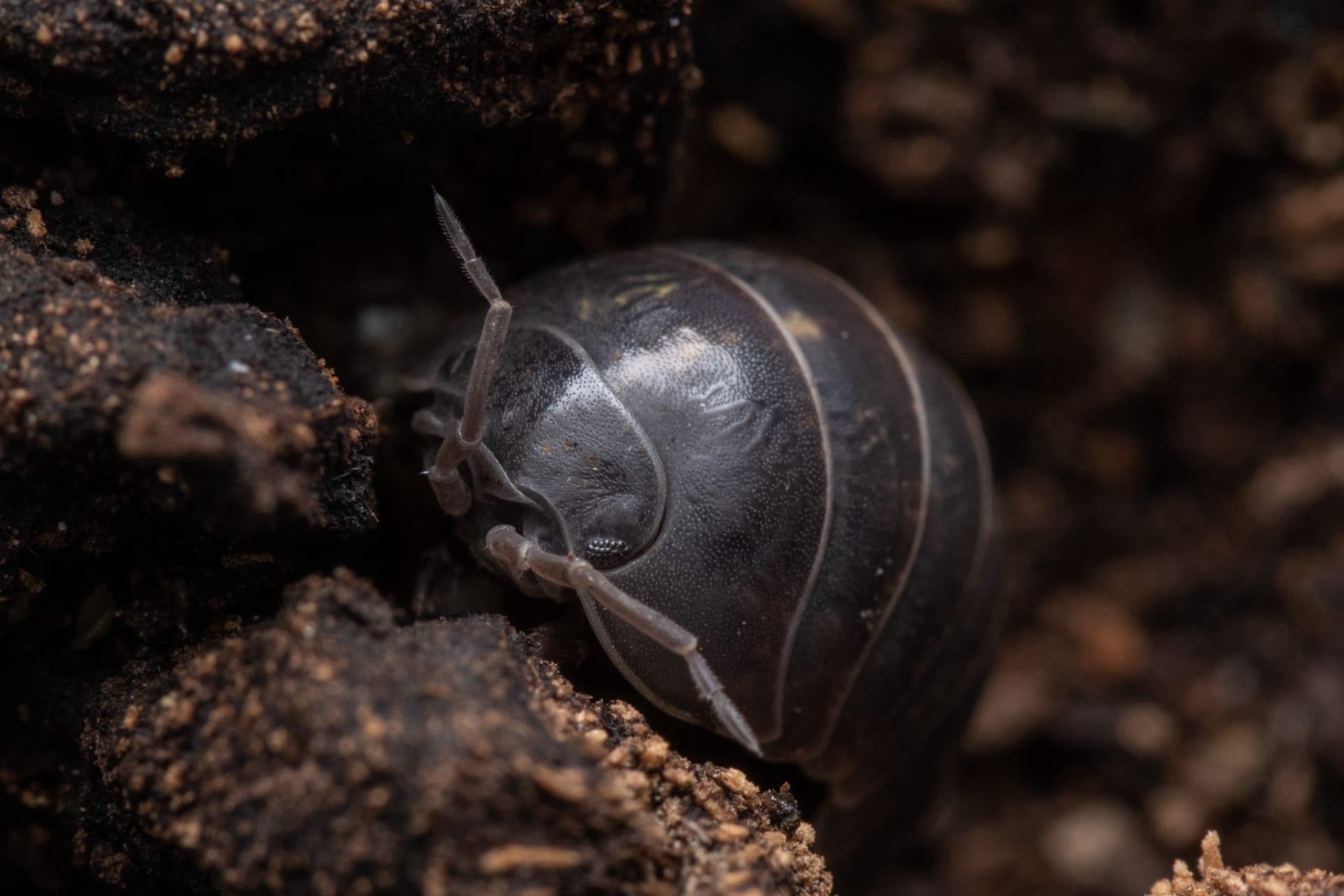1
Pillbugs, often called roly-polies, have a fascinating biology that sets them apart from typical garden insects. Unlike many other crustaceans, pillbugs have successfully adapted to life on land. Remarkably, their gills, which are found under their belly plates, have adapted to extract oxygen from the air, not water. This unique adaptation allows them to breathe air while retaining their aquatic origins. It's essential for them to live in moist environments, as their gills can only function when moist. This is why you often find them under rocks or logs, where it's damp and cool.
Another interesting fact about pillbugs is their diet, which plays a crucial role in the ecosystem. They are detritivores, meaning they primarily feed on decaying plant material, contributing significantly to the decomposition process. This diet makes them nature's recyclers, as they break down organic matter, returning essential nutrients back to the soil. This process not only helps in soil formation but also enhances its fertility. In an average-sized garden, pillbugs can process several pounds of dead leaves and plant debris per year, showcasing their impact on maintaining soil health.

2
Did you know pillbugs have a unique defense mechanism? When threatened, they can roll into a tight ball, protecting their vulnerable underside. This ability is so distinctive that it has earned them the nickname "roly-poly". This rolling action is not just a simple curl; it's a complex and efficient movement where they tuck in their head and tail, forming a near-perfect sphere. This shape makes it difficult for predators to get a grip on them, providing an effective form of defense. This behavior is a prime example of evolutionary adaptation, allowing them to survive in various environments.
Another remarkable aspect of pillbugs is their method of dealing with heavy metal contamination in soil. They have the ability to accumulate heavy metals like lead, cadmium, and copper in their bodies, effectively removing these toxic substances from the soil. This process, known as bioaccumulation, helps in cleaning up soil contaminated with heavy metals. While this makes them a valuable asset in environmental clean-up efforts, it also means that pillbugs can be indicators of soil health, revealing the presence of these metals in their habitat.

3
Surprisingly, pillbugs have a unique way of dealing with internal bacteria. They possess a symbiotic relationship with specific bacteria inside their digestive system. These bacteria help them digest cellulose, a complex carbohydrate found in plant material. This symbiosis is vital for their survival, as it allows them to extract nutrients from otherwise indigestible plant fibers. This digestive process also contributes to the nutrient cycle, further emphasizing their role in ecosystem health.
When it comes to reproduction, pillbugs have an intriguing approach. Female pillbugs carry their eggs in a pouch, similar to kangaroos. This pouch, called a marsupium, is located on their underside and provides a safe and moist environment for the eggs. The female can carry up to 200 eggs in this pouch, ensuring their protection until they hatch. Once the young pillbugs emerge, they remain in the pouch for a few days, receiving care and nourishment from their mother. This maternal care is quite rare among crustaceans and highlights a unique aspect of pillbug biology.

4
Pillbugs have a remarkable ability to regenerate lost limbs. If a pillbug loses a leg due to predation or injury, it has the capability to grow a new one. This regeneration process happens during their molting cycle, where they shed their exoskeleton to grow. Each molt provides an opportunity for lost limbs to start regrowing, although it may take several molts for a limb to fully regenerate. This ability not only aids in their survival but also demonstrates their resilience and adaptability.
Interestingly, pillbugs don't just walk on their legs; they also use them for other purposes. The first pair of legs, modified into claw-like structures, are used for feeding. They use these specialized legs to break down and manipulate their food, assisting in the process of consuming decaying plant material. Furthermore, the last pair of legs are modified to act as sensory organs, helping them to detect changes in their environment. These adaptations showcase the versatility of their limbs beyond locomotion.

5
Pillbugs, despite being crustaceans, have a unique ability to manage water loss. Unlike their aquatic relatives, pillbugs can't swim and avoid submersion in water. To cope with their terrestrial lifestyle, they have developed a waxy layer on their exoskeleton, which reduces water loss. This adaptation is crucial for their survival in dry environments. It helps them retain moisture, allowing them to thrive in habitats that are not excessively wet.
Pillbugs play a significant role in controlling soil pH. As they consume decaying organic matter, they excrete ammonia, which acts as a natural fertilizer. This ammonia release into the soil can help neutralize acidic soils, gradually increasing the soil's pH over time. Their presence in a garden can, therefore, help maintain a balanced soil environment, promoting healthier plant growth. This function makes them not just simple garden dwellers, but important contributors to the ecological balance of their habitat.